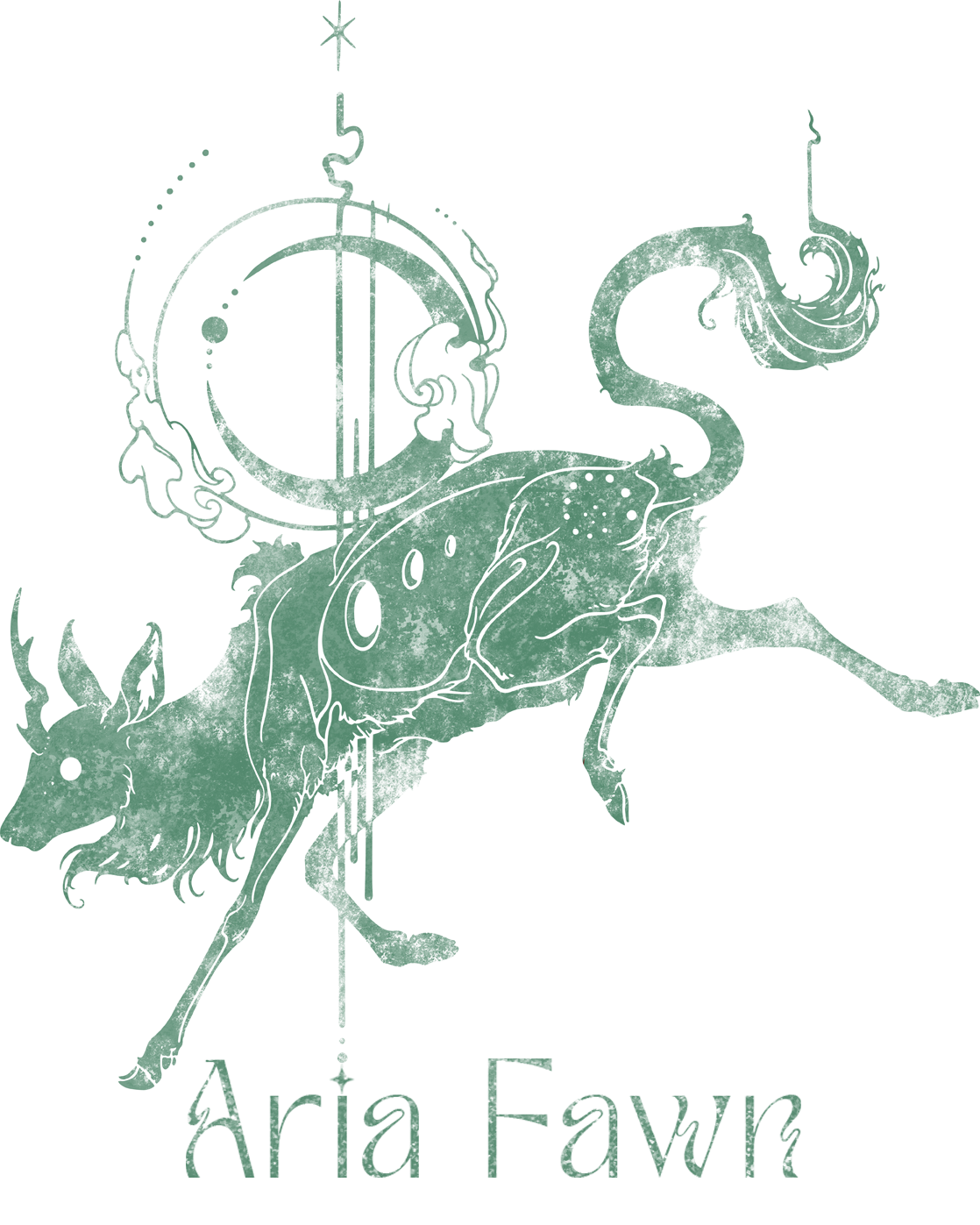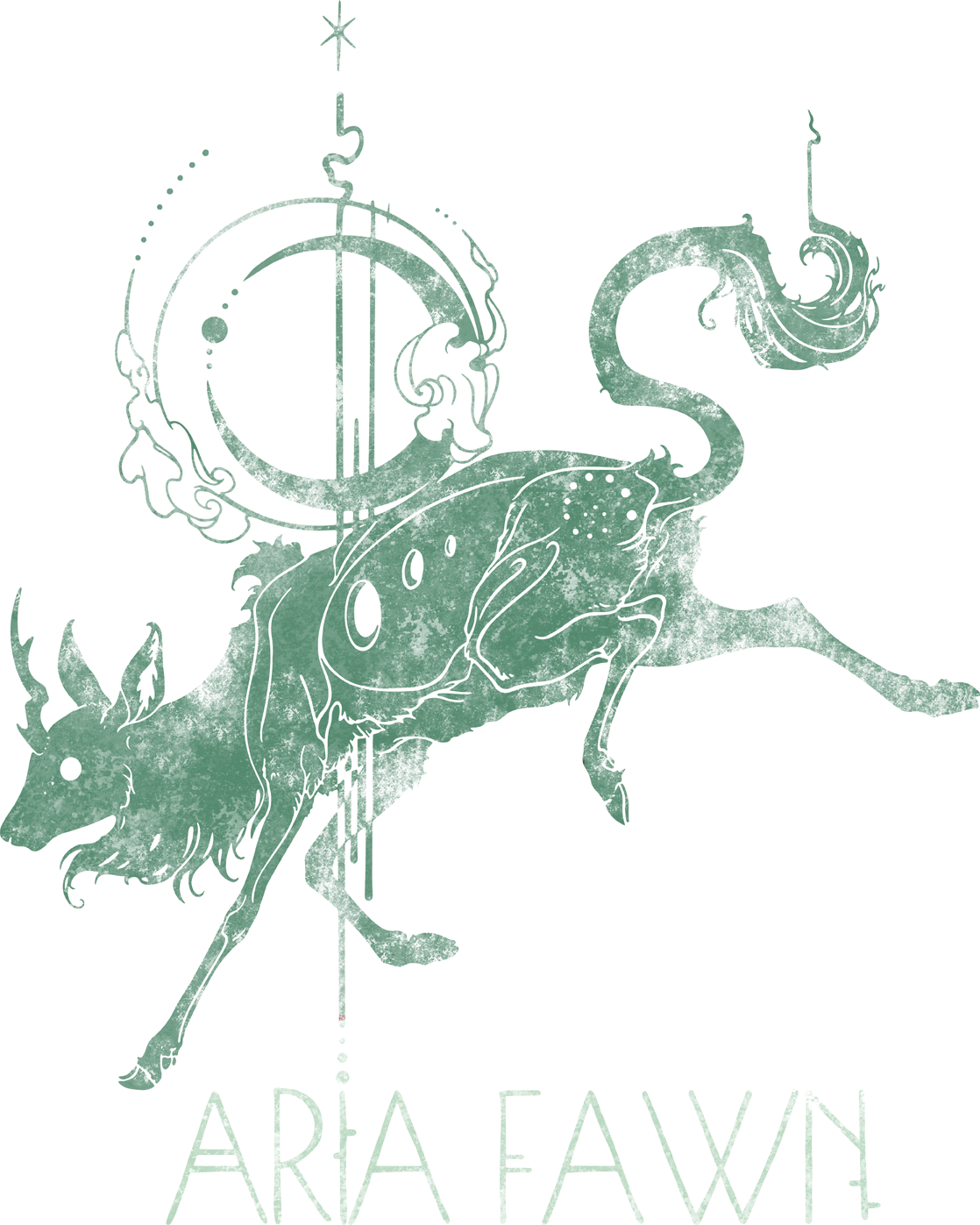WALKTHROUGH + Cheap Scanner Recommendation
EDITING ARIA FROM 2025: I apologize for how small the images in this walkthrough are. When it was first created on my old Patreon, you could right-click to view them larger but that was no longer the case when I retrieved them for this re-upload. I hope it’s still helpful for some despite the issue! <3
Hello, Moonbeams!
I wanted to share a few process photos from a piece I created last month called We Keep Searching
I begin by creating a basic drawing on my iPad and following it with a colour and value concept to help me plan out my colours as well as my light and shadows. One thing I was still unsure of at this stage was what to put at the bottom. I was torn between a mountain or possibly some lit bamboo. In the end I went back to the mountain idea!
I transferred the drawing to my wood panel and begin putting down layers of Daniel Smith opera pink, Daniel Smith carbazole violet, Daniel Smith Manganese Blue as well as a custom mix of Thalo blue by Grumbacher and some turquoise PearlEx pigments. I also added some of my shadow shade (made of ochre yellow, Prussian blue and violet) for the darker areas.
The ghost themself was done mainly in opera pink, and the blues I mentioned. I used salt both for the background textures and the textures on the ghost's body.
The herd of carousel unicorns (whose poles were added later) was painted in layers of my shadow shade with some PearlEx pigment in Aztec gold added for the golden light reflecting on them. I used mainly a size 1 Hwahong brush left over from my Class101 course, as well as my favourite Princeton 20/0 brush for details.
I added more and more layers of colour to the ghost, trying to get them as bright as possible and then I begin adding detail to their...clothing? Body? The sheets that make up their form! This ghost is actually the same as the one featured here but I always wanted to paint the with a variety of colours and patterns!
I also sketched in a small town atop the mountains.
Finally, I detailed the ghost with various leaf and flower patterns, again mainly using my size 1 Hwahong brush and my 20/0 Princeton velvetouch brush.
I finalized the piece by painting the lower mountains and town and adding stars to the sky, as well as any other finalizing details and highlights! The photo on the right is the final, corrected scan and just goes to show me what a different a good scan can make in comparison to a phone photo!
I have been using the Canon Canoscan Lide400 which is such an excellent, and affordable option as scanners go! My wife actually removed the little plastic lip that runs around the glass which allows us to scan larger work in pieces. It picks up the details and textures in my work quite nicely!
I am so pleased with this cheap scanner, haha! I used to invest in pro scans, and still do for larger works, but after many tests and my wife learning how to do colour corrections, I actually have come to find these scans just as effective as the professional ones I was previously paying for. Although if you are considering doing your own scans, just know that the colour correction can be fairly intensive and takes a bit of time to learn. I may do a future walkthrough on how we handle that process if it seems useful!
EDITING ARIA FROM 2025: Still using these cheap scanners with my wife’s mods. I purchased a new one in France as I searched for a professional scanning place to work with. I prefer hiring out the scans that need to be done in multiple pieces because I hate doing those, but for smaller works, these scanners still rock!








